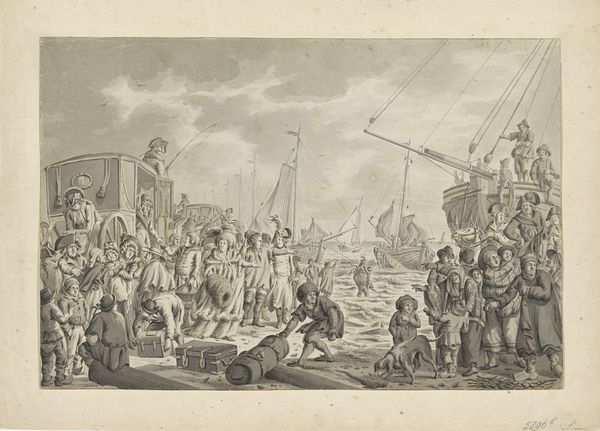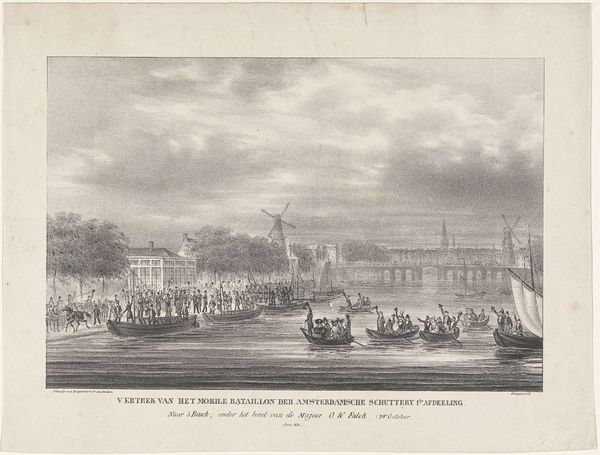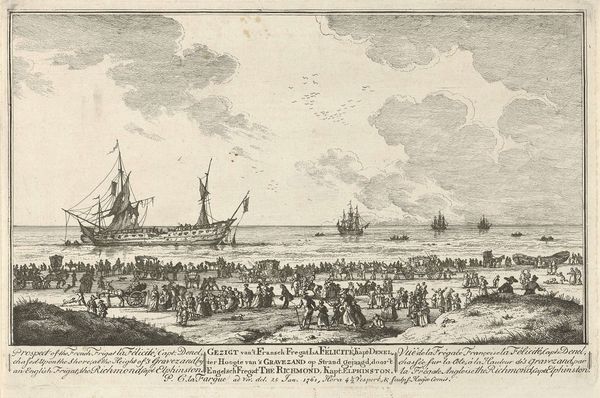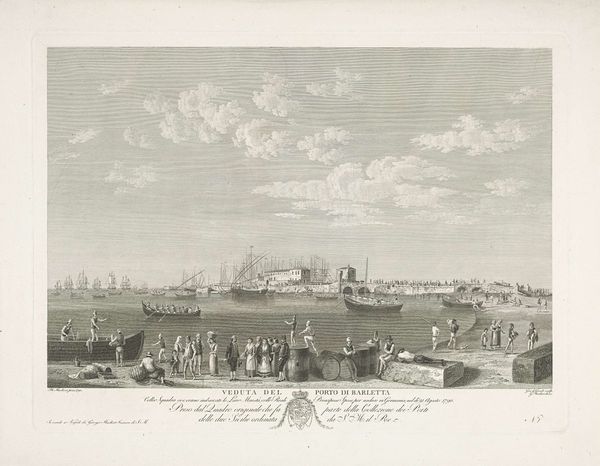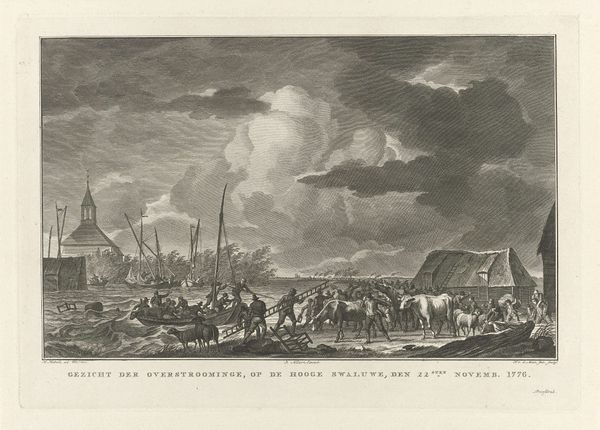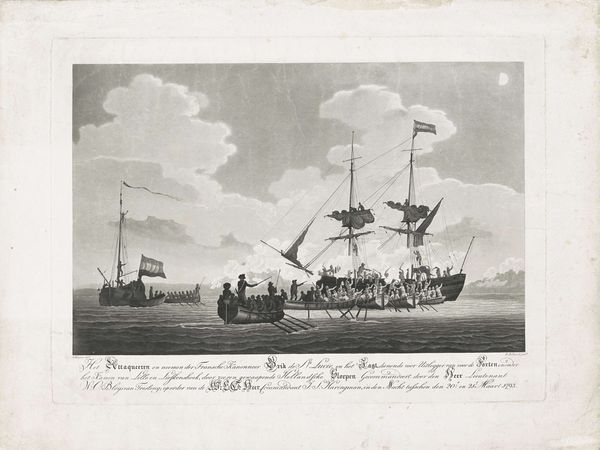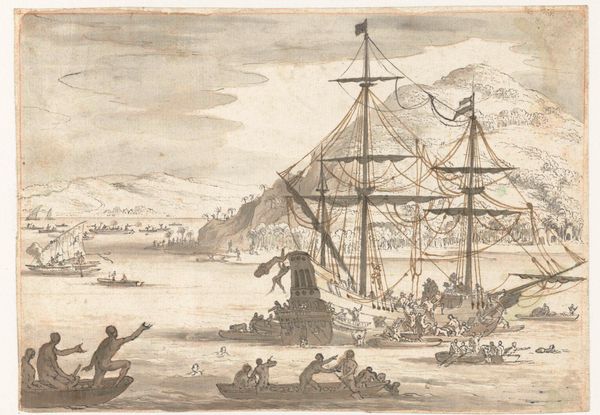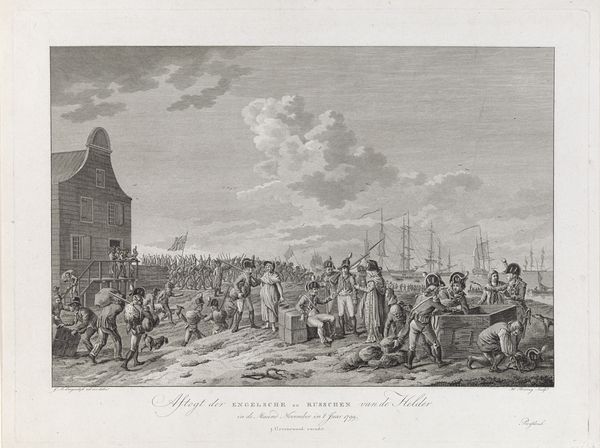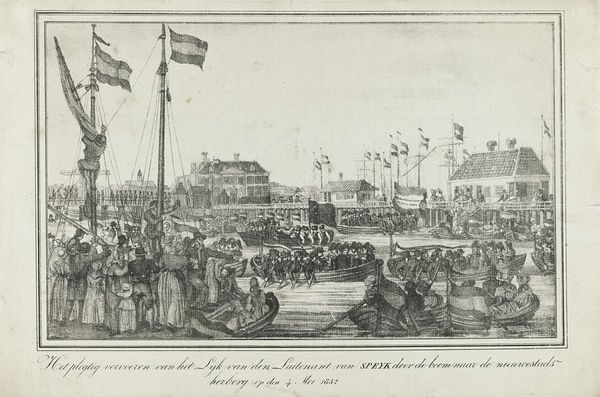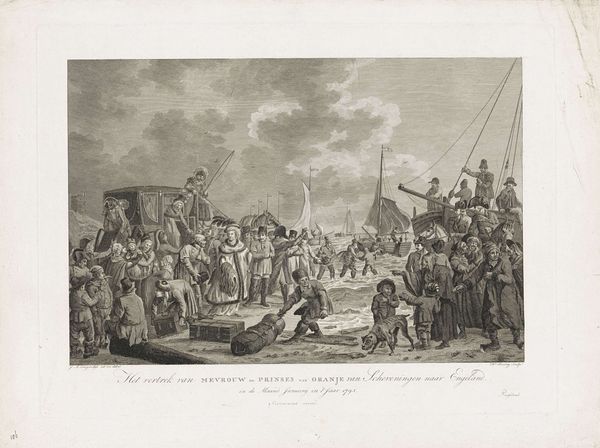
Deze Kunstplaat, voorstellende den aankomst van zijne Majesteit (Onzen tegenwoordigen Souverein) Willem den I. Koning der Nederlanden (...) te Scheveningen den 30 November 1813 / This plate representing the arrival of His Majesty, (Our present most Gracious Sovereign) (...) 1814
0:00
0:00
willemvansenus
Rijksmuseum
print, engraving
#
portrait
#
pencil drawn
#
neoclacissism
# print
#
pencil sketch
#
old engraving style
#
history-painting
#
engraving
Dimensions: height 595 mm, width 750 mm
Copyright: Rijks Museum: Open Domain
Curator: This engraving, created in 1814 by Willem van Senus, commemorates "Deze Kunstplaat, voorstellende den aankomst van zijne Majesteit," depicting the arrival of Willem den I in Scheveningen. A triumphant historical moment captured in print. What's your first take on this image? Editor: It feels both grand and a little stiff. The rigid lines of the ships and figures give it a formal, almost staged quality. The use of light and shadow, though subtle, creates a sense of depth, drawing the eye towards the arriving monarch. Curator: Considering it's an engraving, a medium reliant on reproduction, the dissemination of this image played a significant role in shaping public perception of Willem I’s return and the establishment of the Kingdom of the Netherlands. It’s propaganda, pure and simple. Editor: Yes, but how cleverly composed propaganda! Observe how the artist uses vertical lines, from the masts to the figures standing tall on the boats and on land. It reinforces a sense of stability and order. And the detailed rendering of textures, like the fabric of the clothing and the water's surface, adds a layer of realism. It’s quite masterful. Curator: And consider the location, Scheveningen, a humble fishing village that overnight became the site of national rebirth. The labor, materials, and printing processes made it possible for many people to see this pivotal moment. Editor: Precisely. The formal language echoes neoclassical ideals—order, reason, and a focus on civic virtue. And the light, airy atmosphere contributes to a sense of optimism and hope for the future of the newly formed kingdom. Note how every gaze, every gesture converges upon the King, who embodies the future, but is the light coming from the right? Curator: It’s a carefully crafted image intended to inspire a shared identity and allegiance. Editor: I agree. Looking closer, the engraving technique allows for such fine details that reinforce the work's propagandistic intent. What a wonderful example of neoclassical aesthetics meeting early 19th century printmaking. Curator: It offers such a potent reminder that the construction and reception of such visual narratives played a pivotal role in shaping national identity. Editor: Indeed. It underscores the lasting impact of the composition—an intersection between historical narrative, formal choices, and sheer propagandistic intent.
Comments
No comments
Be the first to comment and join the conversation on the ultimate creative platform.

